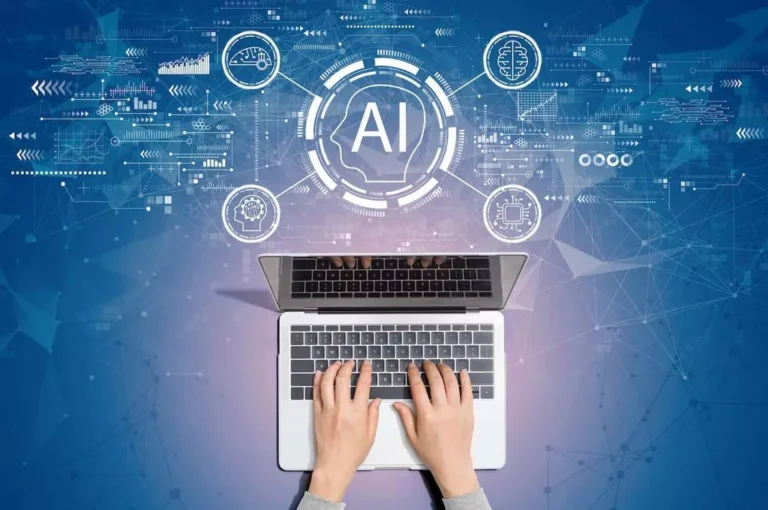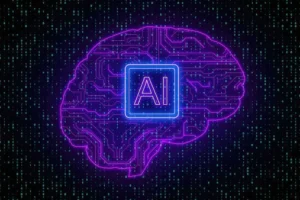The Boundaries of Artificial Intelligence: 7 Limitations of AI

The rapid rise of artificial intelligence (AI) has captured the imagination of many. It led some to believe it’s a cure-all to our business problems. Yet, AI isn’t the super-powered problem-solver that science fiction once portrayed. It comes with its own set of features and hurdles. Inherent limitations of AI can affect how well the systems perform and restrict their usefulness. Let’s explore some of these challenges and top examples in the article.
From Hype to Impact
Artificial intelligence, with various pros and cons, is slowly permeating every aspect of our lives, from shopping to autonomous vehicle controls to cell phones. Productivity will increase, and jobs will change as a result of the widespread use of this intelligent tool. In addition, it has the potential to release billions of dollars in industries spanning from life sciences to finance.
However, the quality of the information we offer to the AI determines how well it performs. Even the most advanced machine learning model is useless if you cannot ask the right questions. Technology will assist you in analyzing data and even stimulate creative initiatives, but it’ll work effectively only if you provide relevant and verified information.

We are confident that we have what it takes to help you get your platform from the idea throughout design and development phases, all the way to successful deployment in a production environment!
7 Limits of Artificial Intelligence
A few years ago, we couldn’t even imagine the impact of technology on business. Today, those who don’t use AI are falling behind. However, even those who have already implemented this solution in their operations may experience problems. The reason is the limitations of AI.
Lack of creativity
When AI has to be original and grasp human emotions, it usually falters. The technology lacks a subtle human touch, a unique perspective that makes the content out-of-the-box. Perhaps you need to write a groundbreaking novel. AI analyzes existing works and creates text according to these patterns. But will it be something original? Probably not.
However, you have the opportunity to improve the outcomes. Prompt engineering saves the day. Users help generative AI create more sophisticated prose or music by carefully creating prompts containing precise instructions.
Example: Netflix’s AI suggests shows based on your viewing history. However, it cannot surprise you with innovative recommendations. You’re likely to get stuck in a rut with content like this.
Amplify biases
You benefit from AI systems, which use historical data to extract insights. Still, there’s an issue: AI intensifies algorithmic biases and ethical concerns in records during decision-making. The result? Striking increase in social imbalances. Biased outcomes in financing, employment, and the criminal justice system jeopardize the whole system.
The root of this issue lies in the fact AI algorithms operate based on preset datasets. Let’s look at the example. We have an AI-driven hiring tool trained on historical data. But here’s a quirk: it’s tainted with gender-based discrimination. In such a scenario, the tool will likely reinforce existing biases.
Example: Amazon Rekognition’s facial recognition program is less precise at identifying people of color. Studies have shown that face recognition is less accurate for dark-skinned faces and women. Nearly 40% of Rekognition’s false positives in the test involved people of color.
Requires monitoring
An experienced operator playing to AI’s strengths is the key to perfect AI performance. Artificial intelligence is a powerful technology, but if it’s not given the right commands, it’s an empty shell.
Company owners can’t afford to ignore the constant monitoring of AI technologies. These systems are constantly being improved; they are becoming more complicated and all-encompassing. Therefore, it’s critical to detect problems in time and manage the performance of AI tools. If you’re still ignoring this issue, think about the risks: inaccurate results and other issues will affect your productivity.
Example: Facebook’s AI struggles to filter out objectionable or dangerous items. A senior engineer and researcher at Facebook estimated that the company’s automated systems erased posts, which caused only 2% of hate speech views on the platform. It shows how meaningful it is to enhance AI and monitor its activities.
Large data consumption
One of AI’s biggest challenges is its constant data demand. From the moment an AI tool is created, it requires a steady inflow of information to function, whether it’s still learning (training phase) or already doing its job (execution phase). To make AI work, programs and “software robots” need clever skills to learn from data. Some advanced robots use tools to understand the information they’re given:
- machine learning;
- text readers (OCR);
- language processors (NLP);
- automation helpers (RPA).
It helps them with tasks like automating activities or making decisions, but it all comes back to the significant data demand.
Data is a major component of AI performance, yet consumer worries about data privacy might impede progress. Increased use of AI depends on fostering trust and using ethical data-collecting methods.
Example: Training the LaMDA AI requires significant computational resources. Microsoft highlights the energy and cost associated with training large AI models.

Emotion detection
The problem is that AI only processes data logically and structurally. It recognizes patterns in data but has no consciousness or emotion, no subjective experience of joy or anger. Some engineers work on designing systems that simulate emotions. It’s a good practice to make the interaction more realistic, but it won’t be authentic.
For AI to understand human relationships, it must understand the literal meaning and underlying emotions. It seeks to comprehend different intentions to offer a more comprehensive picture and in-depth comprehension of the circumstances.
Example: Banking chatbots may find it challenging to handle intricate financial matters or situations that demand empathy. Suppose a customer faces economic difficulties and seeks help from a chatbot. The bot doesn’t grasp the emotional aspect of the situation. It leads to only basic or standard solutions.
Job displacement
One of the biggest worries about AI is taking away our jobs. After all, AI machines can work 24/7 without breaks, unlike us humans. It could mean smart systems replacing people in the future. Some experts even say millions of jobs in the US and Europe could be lost because of automation.
AI’s potential to eliminate jobs poses important accountability concerns. Ventures using AI should be in charge of making sure displaced employees have a seamless transition, maybe by offering retraining opportunities.
However, AI isn’t all bad news. It won’t replace creative professions like designers or artists. While this tech does some tasks faster, the final result still depends on human input and ideas. AI is more like a helpful tool to designers and artists, not a replacement.
Example: McDonald’s has rapidly implemented self-service kiosks to order food. While it improves efficiency, it also reduces the need for cashier positions. It leads to job losses for some employees.
Relatively high price
While some big companies are already making money from AI, it’s not for everyone. This tech is pricey because it’s complex, and you might also have to pay extra fees to keep it running smoothly. Additional costs can also be involved in building AI’s data models.
Here’s the good news: some larger companies are seeing success with AI. The surveys showed that over half increased their profits, and nearly half cut costs after using AI. But it’s important to remember not everyone wins with AI. Another team of researchers found almost a third of AI projects fail. Figuring out AI’s actual cost and benefits are tricky. Unlike what you might think, knowing if AI will pay off for your business is not always easy.
Some firms may find the expense of deploying and maintaining AI solutions to be a barrier. Nevertheless, AI software development firms such as GlobalCloudTeam specialize in developing solutions at a reasonable cost. They may assist companies with requirement assessment and infrastructure optimization to get optimal return on investment.
Example: While promising, IBM’s Watson health initiative’s high development and maintenance costs have led some healthcare institutions to reconsider its implementation. Numerous healthcare companies need more cost-effective solutions.
Case Studies
Now, after we’ve touched on the most stringent limitations of AI, let’s see what it looks like with various industries. Our focus is on marketing, healthcare, and finance.
Marketing
AI is a marketer’s dream come true. It helps track customer behavior, optimize ad spending, and predict trends. But you miss the bigger picture if you don’t understand fundamental frameworks like AIDA (Attention, Interest, Desire, Action).
You may use AI to analyze clicks but forget AIDA, which guides customers through the buying journey. AI won’t tell you to use AIDA to improve your strategy. Therefore, your knowledge gaps limit how well you use the tech. The result? Missed opportunities.
Healthcare
AI is revolutionizing the medical field. It recognizes scan patterns, examines patient records, and makes diagnosis recommendations. It’s not flawless, but it’s stunning.
As an illustration, a patient has symptoms of several conditions. If neither the patient nor the doctor thinks to ask about a less common possibility, the AI won’t catch it. Artificial intelligence (AI) helps but works within the questions and data it’s given. Both patients and doctors must ask the right questions to avoid missing a crucial diagnosis. Its limitations stem from data quality and not capturing the whole picture.
However, this is not the case with GlobalCloudTeam. Among medical service providers looking to breathe new life into their company, collaboration with GlobalCloudTeam is a great ally. Our team of professionals easily develops solutions for remote care, administrative work, and patient education. Most importantly, the experts consider the bigger picture to let your projects soar.
Investment and finance
AI maximizes your investing portfolio by considering historical performance, market trends, and risk tolerance. All is well and good, but what if you don’t know about new asset classes or investing strategies? If you haven’t expressed interest, AI won’t expose you to cryptocurrencies or ESG investing, but it can change your stocks and bonds. It’s restricted to what you now know and cannot recommend unfamiliar tactics.
Final Thoughts
AI continues to evolve, and it’s crucial to recognize its limitations. While true human-level intelligence might be far off, businesses find creative ways to work around these limitations.
In the past, AI often acted like a “black box.” Users fed in questions, and the system spat out answers. The approach came from the need to automate complex tasks so intricate that programming every possible decision was impossible. We let AI explore and find solutions on its own.
Yet, it’s changing with the power of big data and the development of new AI algorithms. Achieving such a level of AI intelligence took much time, even with powerful supercomputers. These advancements pave the way for a new generation of smarter AI programs.
It highlights the irreplaceable role of human curiosity and expertise. Our ability to ask questions, even those we haven’t considered, gives us a unique edge in getting the most out of AI tools. The ideal scenario is a harmonious partnership between human intuition and AI analysis. Humans act as the driver, navigating AI’s vast potential. Choose the Global Cloud Team to get the appropriate custom AI solution to strengthen your business.
Top Articles
Defining Neuro-Symbolic AI and Its Significance
I am here to help you!
Explore the possibility to hire a dedicated R&D team that helps your company to scale product development.






